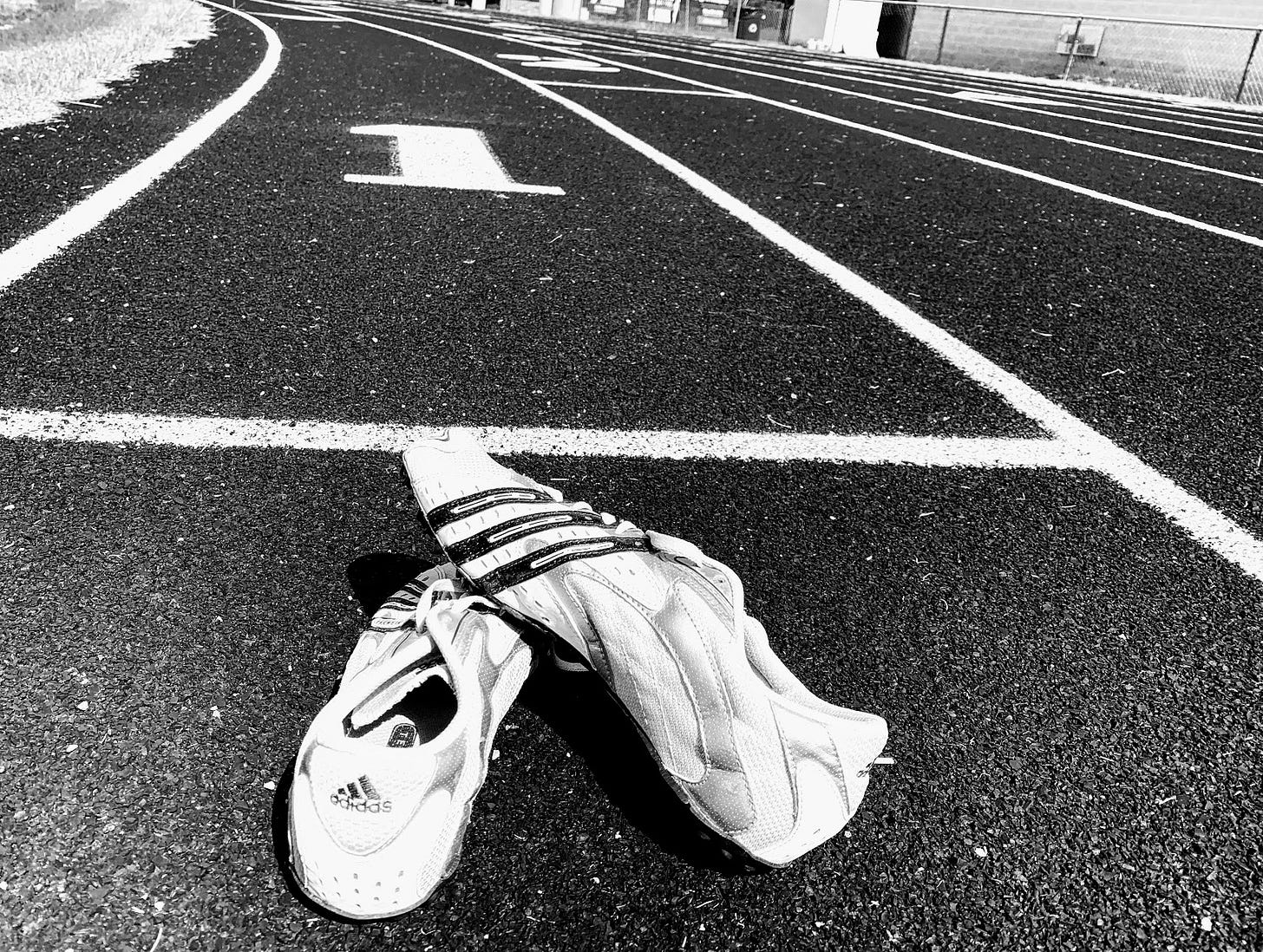Run like a girl

Flashback: I’m 13 years old, and I’ve been abruptly plopped down in a new home in a new state, right in the middle of eighth grade. I’m more comfortable with myself than I used to be, having adopted grunge as my personal style in everything from clothes to hair to music. I’ve learned to protect myself with sarcasm and scorn. But at my new school, grunge is unexpectedly situated in a vast and lonely plain between Gothville and Little Stepford. And everyone already knows who their friends are; they don’t need another one. I know where I am, but I feel lost just the same.
Another gym class, another round of 50-meter dashes. Good. Some of these boys are actually cute, and I’m looking forward to getting their attention by outrunning them. I don’t need them to like me. I just want to interest someone. Anyone.
Except, for the first time ever, I can’t beat them. Up until now, the really athletic boys were the only ones who were ever faster than me. But suddenly, fully half of these awkward goons are posting significantly better times than mine. It’s not a fluke.
I finally realize that these aren’t really boys, and we’re not kids racing on the playground. I’ve been in a woman’s body for a couple of years already, as tall as I’m ever going to be at five-foot-two and change. And I’m competing against young men, growing toward their full hulking heights on just a slight delay. A few of them are more than a foot taller than I am. Getting noticed has become, in addition to everything else, a vertical challenge.
Looking back now, I see how much it mattered that I became a runner before I became a woman. Because of that timing, my understanding of femininity was always forced to co-exist with my reality as an athlete. Young women constantly confront gendered expectations that conflict with athletics: You’re not tough; you shouldn’t be tough. Your main value is in looking pretty, being pretty. You can’t attract boys if you’re competing with them. Your accomplishments and tenacity are fundamentally less interesting than whatever the boys are doing.
But my identity as a runner never felt any less absolute than my sex, my gender, or my sexuality. I was a cisgendered, heterosexual female athlete, all non-negotiable facts intertwined within my person in perfect harmony with each other. They formed an undeniable truth that dispensed, in short order, with any contrary expectations that were thrown into my path.
The harmonies got more complex as gender started to matter more in my life. When I ran on my first track team in seventh grade, no one explained why boys and girls had to race separately even though we practiced together. Maybe it seemed obvious why. Or maybe no one wanted to spell out for the girls that, because of our anatomy, we soon wouldn’t be able to keep up with our peers who happened to be male. Still, even when the teams officially bifurcated, I never stopped running with boys and men. Informally, track-and-field is almost a co-ed sport; event specialists often do the same workouts at the same time and place, regardless of gender. It wasn’t uncommon for us to literally run our sprint repeats together. In those years, I learned to think of perseverance in the face of adversity — sometimes hopeless adversity — as a defining attribute of femininity.
But perseverance against long odds wasn’t only about running with boys. More often than not, I got set in my starting blocks next to girls who were taller, stronger, and older than me. I sometimes lined up against fierce competitors whose muscle fibers would always twitch faster than mine, no matter how hard I trained. I gave everything I had racing girls I already knew would beat me, since I followed their times every week in the newspaper. For the vast majority of girls I raced, I was the unbeatable one. They ran with me anyway.
It never occurred to me to think of any of these arrangements as unfair. I never wondered if one of my bigger, stronger opponents was “really” a girl, never thought I wanted to race people only if their testosterone levels, height, age, and muscle structure were comparable to mine. Those constraints would be alien to a male athlete focused purely on reaching his peak performance. I like to think they were alien to me, too, just like they were later in life when I studied and worked in male-dominated environments.
And yet. Sex-based differences, whether natural or nurtured, sometimes do merit separate considerations. “Girls’ track” always felt like a necessary contrivance to me, the best feasible way to organize things for all the people wanting to be involved. I appreciate that system for nurturing my competition experience and motivation. It made people celebrate my (relative) talent when they woudn’t have cared otherwise. It made me push myself toward goals that seemed within reach. In fact, the people in my community accepted the legitimacy of “girls track” so readily that I could almost forget that the boys’ sprinters would smoke me in a head-to-head race. Almost.
On the other hand, unless you’re Usain Bolt, there’s always somebody faster. At the end of the day, competing on the track for me was always this simple:
“Wanna race me from here to there?” Hell yeah.
Lesson two: There’s no wrong way to be female. However you choose to do it, just try to find people who inspire you to bring your best game.





